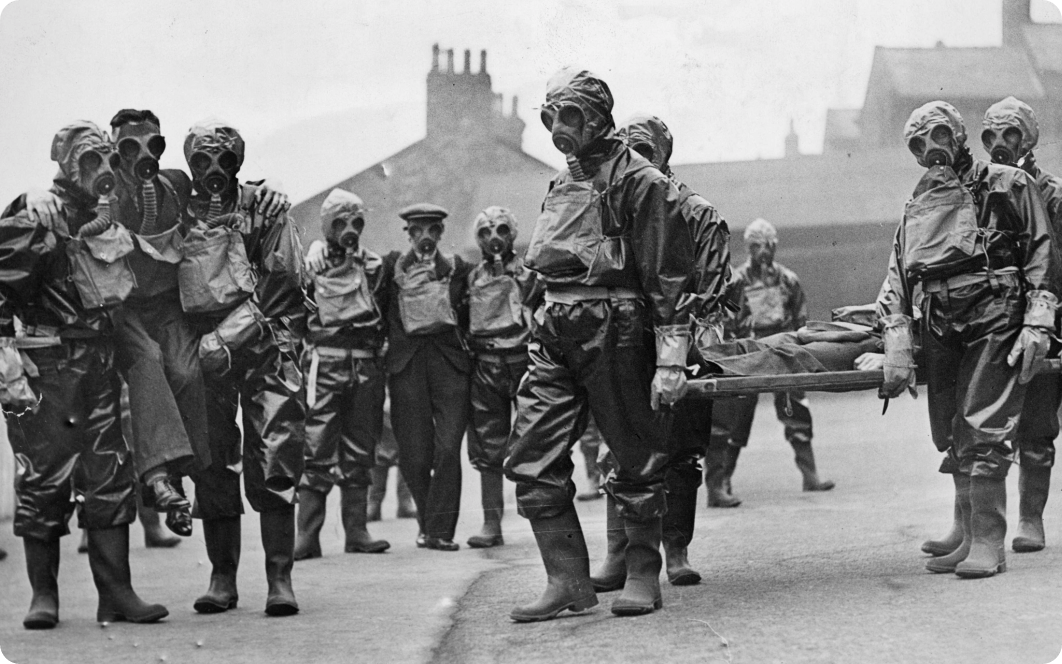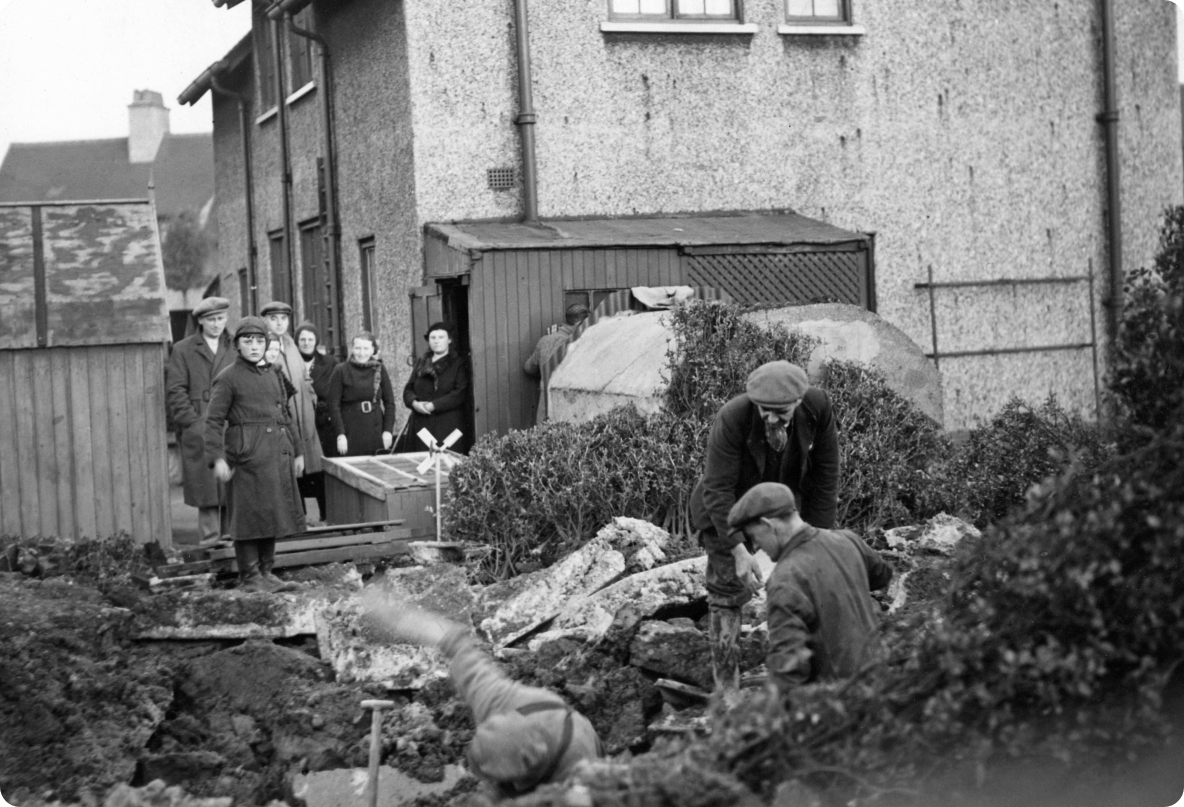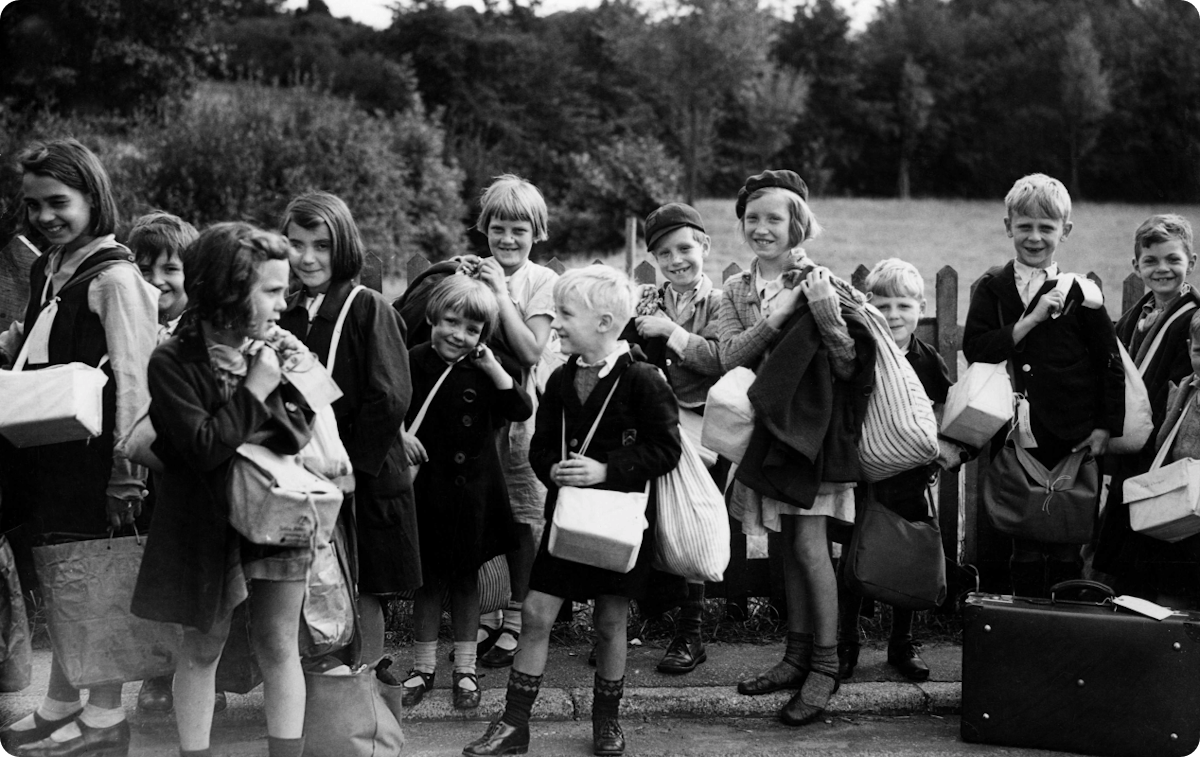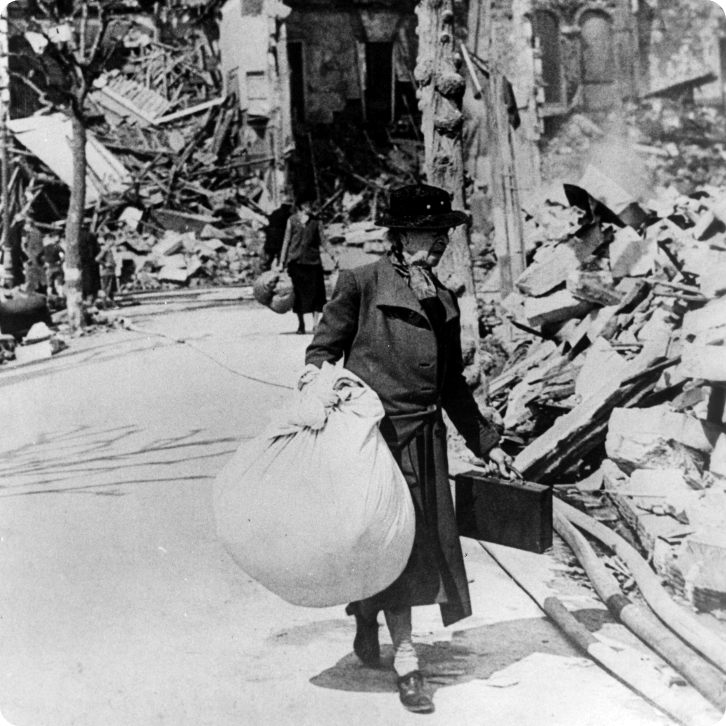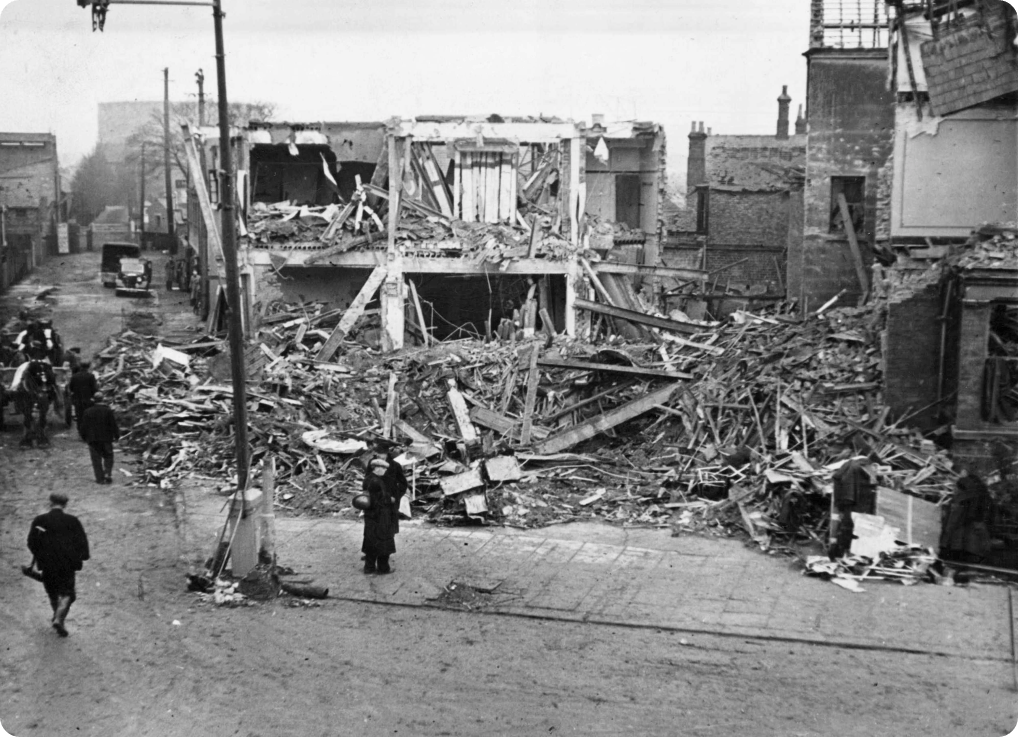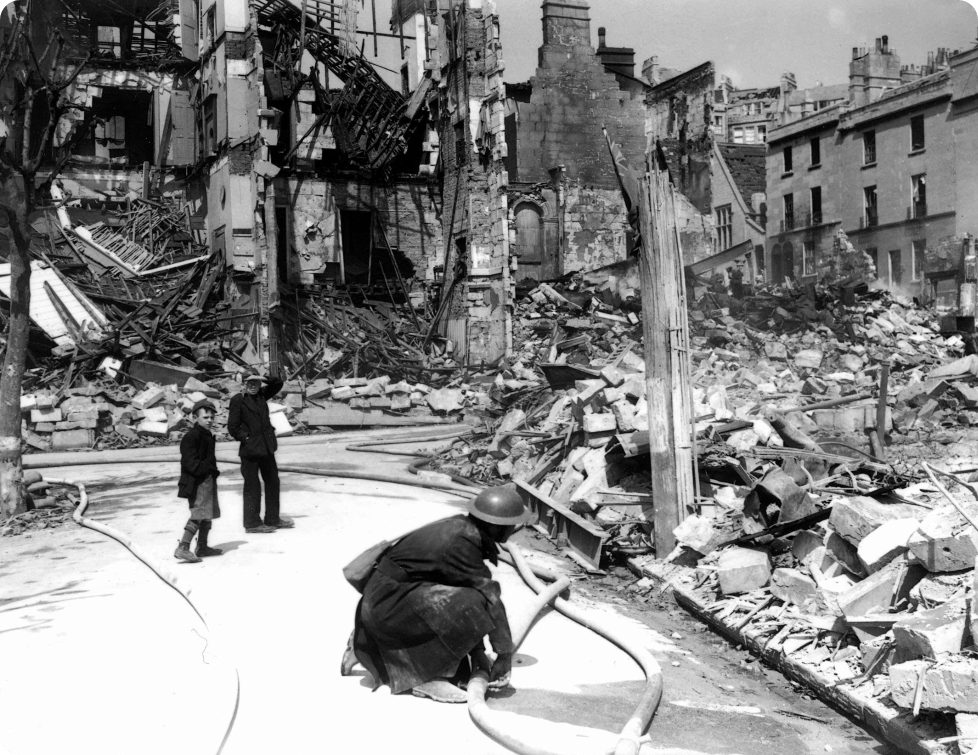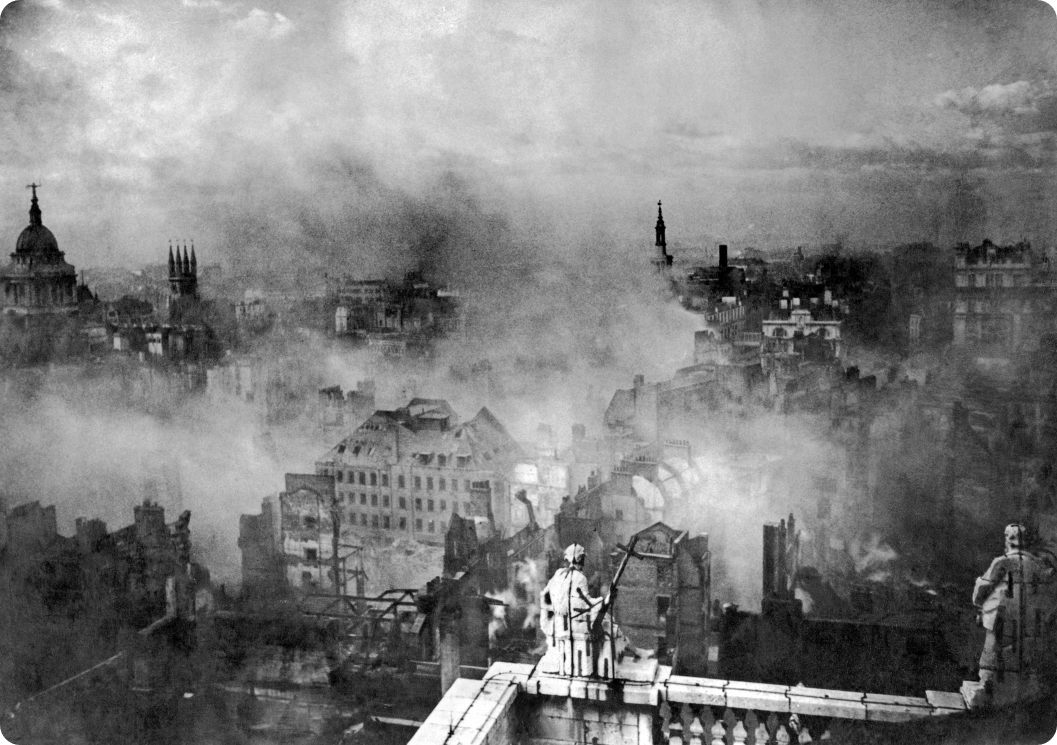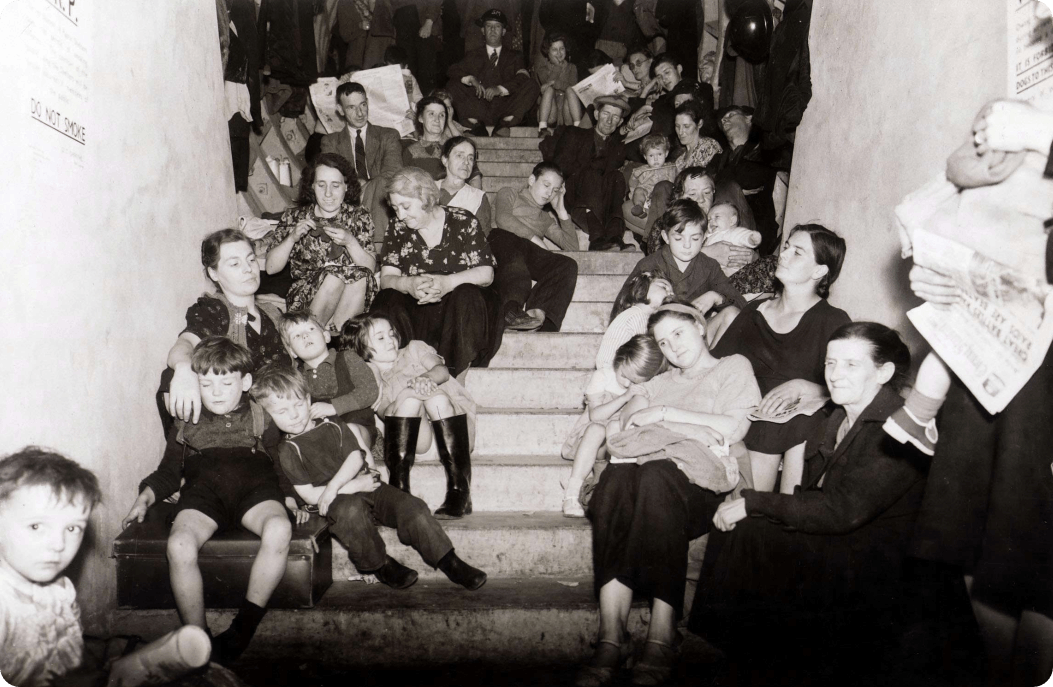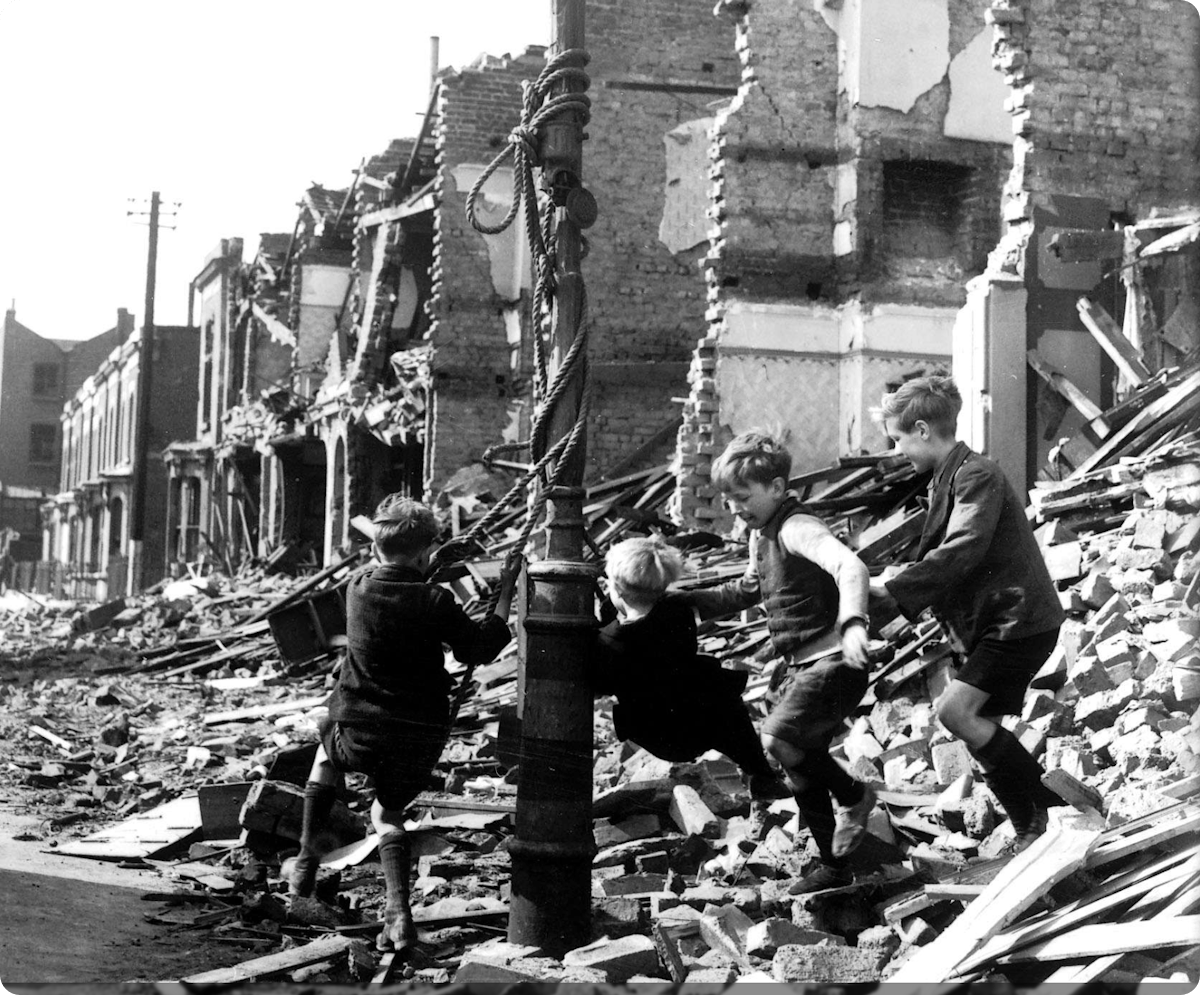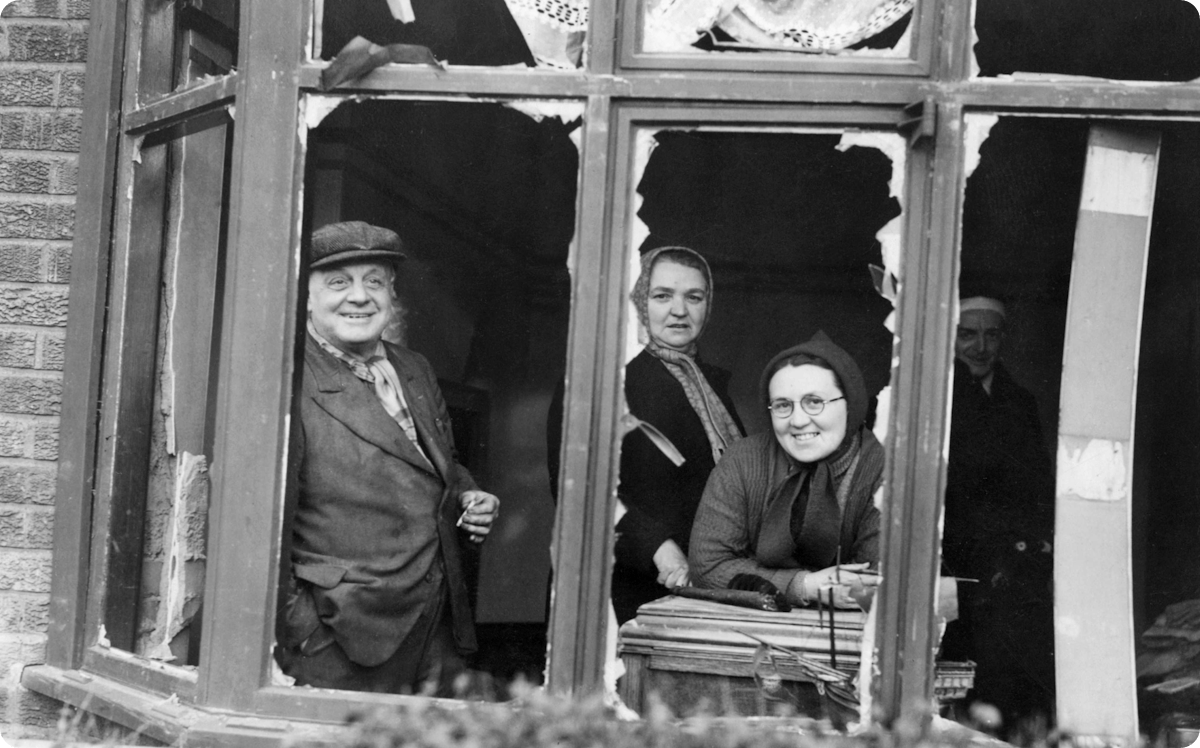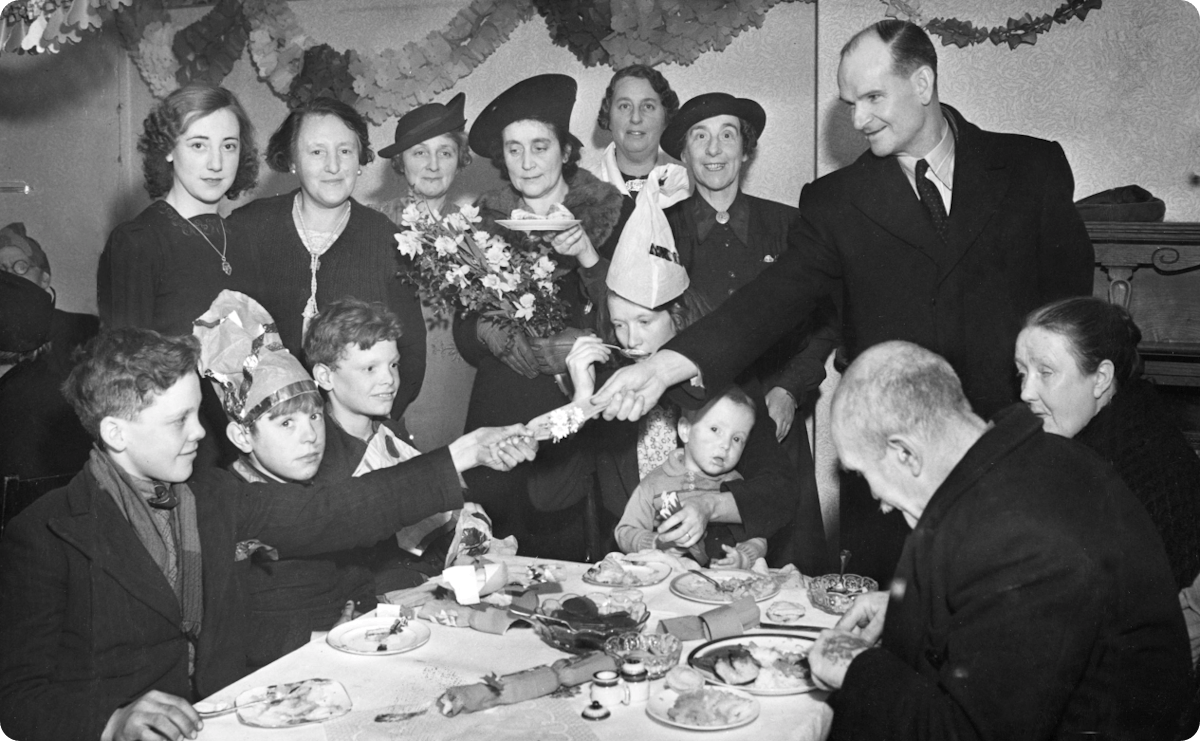The Blitz in photographs
6-7 minute read
By Daisy Goddard | November 6, 2024

The Findmypast Photo Collection tells the story of the Blitz (1940-41) in vivid detail.
We dug into our collection of historical photographs to unveil the true stories of British towns and cities during the Blitz.
Whether your ancestors fought overseas, worked as Air Raid Precautions Volunteers (ARP) or were evacuated out of a major city during this dark period of British history, we’re highlighting their tales of struggle and perseverance.
Delve even deeper into wartime history with Findmypast. Head over to our blog to discover the nation's favourite war stories, the first and last soldiers to die in World War 1 and more.
The real history behind Steve McQueen’s Blitz (2024)
November 2024 saw the release of director Steve McQueen's war drama Blitz, starring Saoirse Ronan and Harris Dickinson. The film depicts the heart-wrenching tale of a nine-year-old's plight to return to his mother after being evacuated to the countryside. How much do you know about this dark chapter in history?
Over 800,000 British children were evacuated from towns and cities during the Blitz.
World War 2 began in 1939 when Nazi Germany invaded Poland, prompting Britain and France to declare war. Using a swift "lightning war" strategy known as Blitzkrieg, Germany rapidly conquered Poland, Denmark, Norway, Belgium, the Netherlands, and France.
By 1940, Britain stood alone against Nazi expansion, and Hitler aimed to force a British surrender with the Blitz—a series of aerial bombing attacks launched in September 1940, targeting cities and industrial centres.
London was hit the hardest, enduring 57 consecutive nights of German bombing, while Coventry, Liverpool, and Birmingham also saw heavy damage. Over eight months, around 43,000 British civilians lost their lives.
The United Kingdom’s resilience in the face of destruction became a powerful symbol of its determination to resist. To learn more about the Blitz, as it really happened, explore the historical newspaper clippings in our Blitz Collection.
Britain prepares for bomb attacks
Ahead of the tragic events of the Blitz, the British army and civilian organisations were tasked with preparing the nation for war. With a little digging, we found this photograph from 1937, which sees Liverpool military personnel training for a potential air raid attack. This is two years before the outbreak of World War 2 and indicates that necessary preparations for war were actually made years in advance.
After war broke out and the threat of attack by air was imminent, households began to hurriedly make their own precautions for protecting themselves. Here, we see residents of James Reckitt Avenue in Hull, Yorkshire, digging to build an air raid shelter in their garden.
James Reckitt Avenue was hit in the Hull Blitz in March 1941. Between 1940 and 1945, Hull’s population spent over 1,000 hours under air raid alert. By the end of the war, almost 1,200 Hull residents had lost their lives in the bombing.
The evacuation plan in action
The British Government’s plan to evacuate people from cities was announced on 1 September 1939. In the first four days of September, almost three million people – mostly schoolchildren - were evacuated to the countryside. By November 1940, over a quarter of the population of London had fled the city.
Taken on 3 September 1939, this photograph shows some of the earliest evacuees of World War II.
Here, we see parents in Bristol waving goodbye to their evacuee children in January 1941.
Once initially thought rural enough to be safe, Bristol introduced an evacuation programme after it was bombed in November 1940.
The devastation of the Blitz, from London to Liverpool
The Blitz had an immense emotional and financial cost. Historic buildings that had stood for hundreds of years were bombed to ruin.
It split apart families, destroyed homes, and reduced the country’s major cities to rubble. Our Photo Collection offers a harrowing insight into this devastation.
Below we see children watching a firefighter at work in Bath. Between 25 and 27 April 1942, Bath suffered three attacks from 80 Luftwaffe aircraft from Northern France.
Known as the Bath Blitz, these attacks were part of the Baedeker raids which targeted locations of cultural and historical importance.
The London Blitz
When we think of the Blitz, scenes of London in smoke may come to mind.
While cities up and down the country were hit by German bombers, the capital suffered the most overall damage. Liverpool, Birmingham and Plymouth experienced 8 attacks each - London was hit by 71 throughout the war.
In poorer areas of the city, there was a fatal lack of air raid shelters – communal shelters were set up in Underground stations. Still, these only accommodated an estimated seventh of the population.
Many Londoners were killed when stations were bombed. Over 150 people died when Stoke Newington station was bombed in October 1940.
Other tragedies took place, too. Due to chaotic and overcrowded conditions, 173 people died in a crowd surge at Bethnal Green station in March 1943.
Keep calm and carry on: stories of survival
Despite the immense hardships faced by the population, our Photo Collection also highlights the perseverance of the human spirit.
During the six years of World War 2, families found glimpses of normality where they could – whether that was a makeshift Christmas celebration or rebuilding homes that had been damaged.
Here, we see Hull residents smiling together despite their homes suffering significant bomb damage.
A Christmas dinner was held for children at the Women’s Voluntary Services (WVS) Headquarters in Liverpool. Thanks to a generous donor, the organisation was able to give families a moment of joy at an unimaginably difficult time.
The above photo was taken on 28 December 1940.
No story left behind
Findmypast is a mission to ensure that no story is forgotten. However your ancestors spent the fateful Second World War years, their sacrifices deserve to be remembered.
The Blitz affected millions of British people – and the Findmypast Photo Collection tells their story in stark detail. If your ancestor was injured or killed as a civilian between 1940 and 1945, you may find their name within our collection of Second World War Civilian Casualties.
Related articles recommended for you

The inspirational work of the Women's Land Army, as told through the Findmypast Photo Collection
History Hub
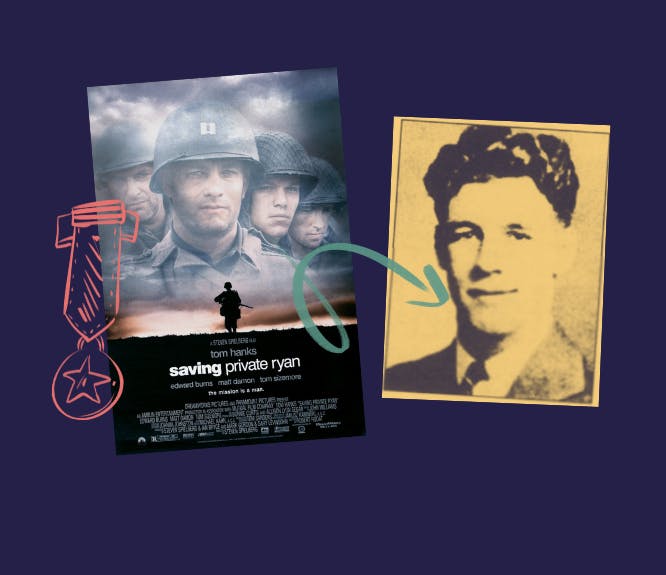
These are the nation’s favourite war stories – and the real history behind them
History Hub
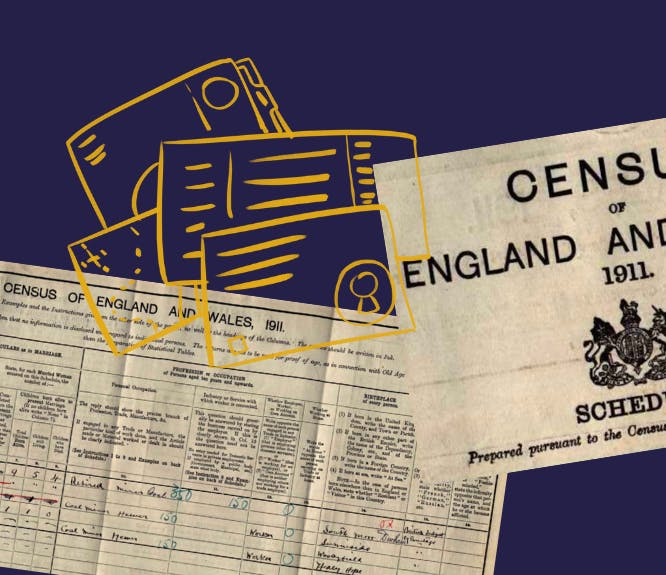
Seven surprising finds in the 1911 Census
Discoveries

